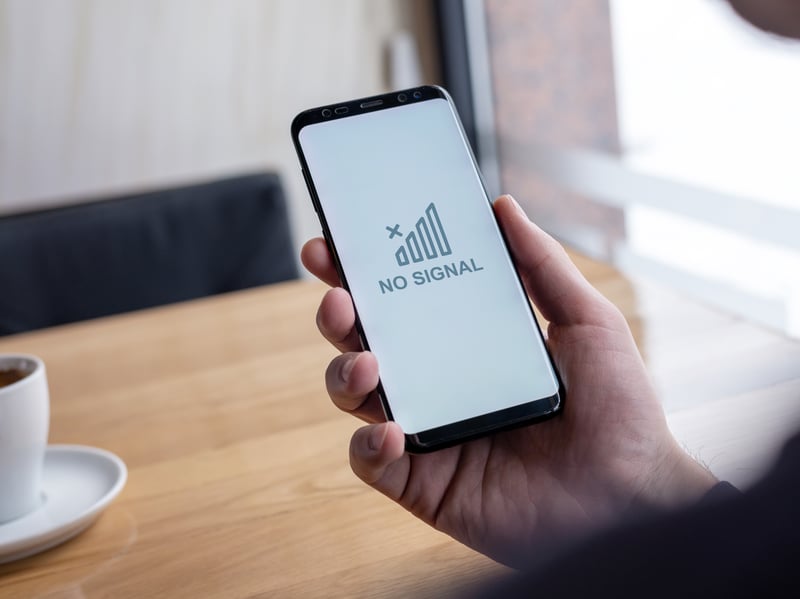Discover how Maymounah Abroudj-Ameur's rise to the World Skate Games is inspiring Bedford's youth, balancing athletics and academics, and boosting roller hockey in Britain.
The 10 Worst Areas for Mobile Phone Signal in the UK - Full List of Postcode Dead Spots
In an age where connectivity is paramount, having a reliable mobile signal is essential for staying in touch with loved ones, conducting business, and even accessing emergency services. Despite advancements in technology, certain areas in the UK remain notorious for their poor mobile phone reception. Today, we reveal the top ten worst areas for mobile phone signal in the UK and delve into what makes these regions notorious dead spots.

The Dead Spots Have Been Revealed 📱
A recent comprehensive study has identified the regions in the UK where mobile phone signal is notoriously weak or non-existent. These findings shed light on the challenges faced by residents and businesses in these areas, highlighting a significant digital divide that persists despite widespread efforts to improve coverage.
Top 10 Worst Areas for Mobile Phone Signal in the UK
Below is the full list of postcode dead spots, each facing unique issues that contribute to poor mobile signal strength:
- AB31 (Banchory, Scotland) - Nestled in the heart of Aberdeenshire, this area struggles with signal due to its rugged terrain and dense woodlands.
- LA23 (Windermere, England) - Known for its scenic beauty, Windermere's mountainous landscape presents significant barriers to signal penetration.
- SY10 (Oswestry, Wales) - Rural Wales is no stranger to connectivity issues, and SY10 exemplifies these challenges with its remote locations.
- TQ13 (Newton Abbot, England) - The rolling hills and deep valleys of Devon contribute to the patchy signal experienced by TQ13 residents.
- IV40 (Kyle of Lochalsh, Scotland) - Located near the Isle of Skye, IV40 is hindered by its rocky topography and sparse population.
- PA20 (Isle of Bute, Scotland) - This island community faces signal disruptions due to its insular position and natural obstacles.
- NE48 (Hexham, England) - The Northumberland region's expansive national parks impede consistent mobile coverage in NE48.
- EX39 (Bideford, England) - Coastal and countryside factors combine to make EX39 a challenging area for mobile networks.
- LD3 (Brecon, Wales) - The Brecon Beacons National Park creates significant signal difficulties for those living in LD3.
- DG8 (Newton Stewart, Scotland) - Southern Scotland's DG8 is plagued by signal issues due to its remoteness and rugged landscape.
Underlying Causes of Signal Dead Spots
Several factors contribute to these regions being identified as the worst for mobile phone signal in the UK:
- Geographical Barriers - Mountains, hills, and dense forests can significantly obstruct signal transmission.
- Rural Isolation - Remote locations often lack the infrastructure needed for strong mobile coverage.
- Network Limitations - Some areas may be underserved by network providers, leading to inconsistent service.
- Regulatory Challenges - Planning permissions and regulations can delay the development of new infrastructure.
Impact on Residents and Businesses
For residents in these areas, the lack of reliable mobile signal can lead to a sense of isolation, inconvenience, and even danger in emergency situations. Businesses, especially those reliant on mobile connectivity for operations and customer engagement, may face significant hurdles, impacting local economies and growth potential.
Efforts to Improve Connectivity
Recognising the importance of robust mobile coverage, various initiatives have been launched to address these dead spots. Government programs, private sector investments, and technological innovations such as satellite communication and signal boosters are all being explored to enhance connectivity in these regions.
Looking Forward
As we move towards an increasingly connected world, bridging the digital divide remains a critical challenge. The effort to eradicate mobile phone signal dead spots in the UK is ongoing, driven by a collective desire to ensure that no community is left behind in the digital age.
For the residents of these top ten worst areas for mobile phone signal, hope remains that in the near future, they will enjoy the same level of connectivity as the rest of the country.
